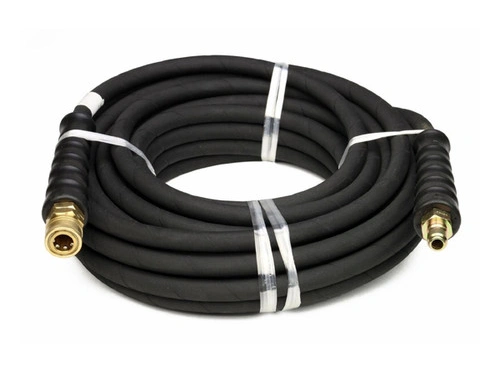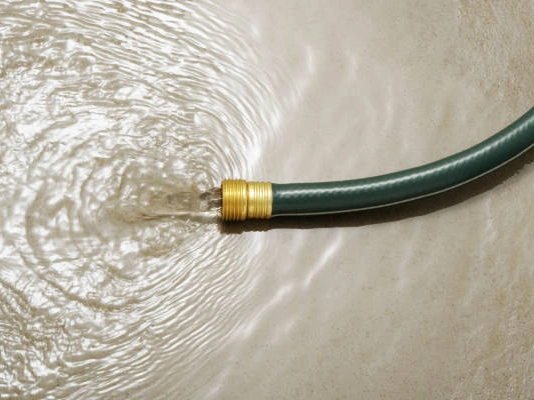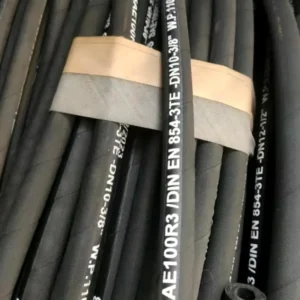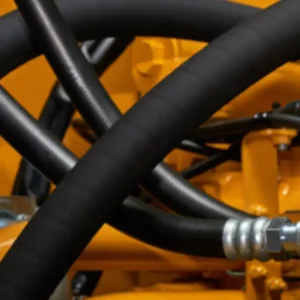When you’re trying to tackle tough cleaning jobs with a pressure washer, understanding each component is key to achieving the best results. We’ve all seen the standard high-pressure hose connected to a washer wand, but what about the pulse hose? This often-overlooked component is crucial for certain tasks, especially when clearing clogs and navigating tight spaces.
Let’s take a deeper look at the pulse hose’s function, how it works, and why it might be an essential part of your pressure washing arsenal.
What is a Pulse Hose and How is it Different?

We often see pressure washers with a single, long hose that delivers a steady stream of water. However, a pulse hose is built for a different purpose entirely. Instead of a constant flow, it’s designed to deliver water in rapid, short bursts—or pulses. This pulsing action creates a unique force that is incredibly effective at dislodging stubborn debris. It’s a specialized tool, distinct from the regular high-pressure hose, and understanding its function is crucial for anyone looking to get the most out of their pressure washing setup.
| Feature | Standard Pressure Washer Hose | Pulse Hose |
| Water Flow | Constant, high-pressure stream | Pulsing, high-pressure bursts |
| Primary Use | General surface cleaning (driveways, siding, decks) | Clearing clogs and cleaning drains |
| Flexibility | Standard flexibility, designed for reach | Extremely flexible, designed to navigate pipes |
| Nozzle Type | Standard spray nozzles (fan, pencil, etc.) | Specialized nozzles (rotating, jetter) |
| Pressure Delivery | Consistent pressure | Varying pressure due to pulsing action |
What Does a Pulse Hose Do?

The pulsing action of a hose isn’t just a gimmick; it’s a carefully designed process. These “pulses” are generated by a special device within the high-pressure cleaning system (usually a pulse valve). This valve opens and closes rapidly, creating a series of hydraulic shocks. These shocks, or micro-water hammers, travel down the hose to the nozzle.
When the pulses strike the clog (such as grease, tree roots, or mineral deposits in a drain pipe), the shockwaves break it up and break it apart. This is more effective than a constant stream of water, which may simply push the clog deeper into the pipe.
What are the Benefits of Using a Pulse Hose?

The benefits of using a pulse hose go beyond just clearing clogs. We’ve found that it’s an indispensable tool for anyone who needs to clean inside pipes, drains, or other confined spaces. Here’s why we think it’s a must-have for certain jobs:
- Superior Clog-Clearing Power: As we discussed, the pulsing action is far more effective at breaking up stubborn blockages than a standard hose. It can handle everything from grease and soap scum to small roots and sludge.
- Navigation in Tight Spaces: A standard pressure washer hose is stiff and difficult to maneuver in a pipe. Pulse hoses are incredibly flexible, allowing them to snake through bends and turns in drains and sewer lines.
- Reduced Risk of Pipe Damage: The pulsing action is powerful but also controlled. We’ve seen that it’s less likely to damage fragile or older pipes compared to a constant, high-pressure blast, which could potentially crack or burst a weak spot.
- Deep Cleaning Capabilities: The specialized nozzles used with pulse hoses can spray water in multiple directions, ensuring that the entire interior of a pipe is cleaned, not just the area directly in front of the nozzle. This is essential for preventing future clogs.
What Does a Pulse Hose Do on a Pressure Washer
We’ve used pulse hoses for a variety of tasks where a regular pressure washer just wouldn’t cut it. It’s not a tool for every job, but when you need it, it’s invaluable. Here are some of the most common applications we’ve encountered:
- Sewer and Drain Line Cleaning: This is arguably the most common use. Whether it’s a clogged kitchen sink drain, a slow-draining shower, or a main sewer line backed up with roots, a pulse hose with a sewer jetter kit can clear it out quickly and efficiently.
- Commercial Kitchens: Restaurants often deal with severe grease buildup in their drain lines. A pulse hose can easily break down and flush away this thick grease, preventing costly plumbing emergencies.
- Industrial Pipe Maintenance: In industrial settings, pipes can get clogged with all sorts of materials, from chemical residue to heavy sludge. The powerful pulsing action is perfect for this kind of heavy-duty cleaning.
- Clearing Debris from Gutters and Downspouts: While you might use a standard pressure washer to clean the outside of gutters, a flexible pulse hose can be snaked down the downspout to clear leaves, twigs, and mud that are causing blockages.
How to Choose the Right Pulse Hose

Selecting the right pulse hose depends on your specific needs and the type of pressure washer you use. Here’s a checklist to guide you:
1. Pressure Rating
- Match the PSI: Ensure the hose’s maximum working pressure aligns with your pressure washer’s output. For example, a 3,000 PSI pressure washer requires a hose rated for at least 3,000 PSI.
- Burst Pressure: Look for a hose with a 4:1 burst-to-working pressure ratio (e.g., 12,000 PSI burst pressure for a 3,000 PSI hose) for added safety.
2. Material and Construction
- Textile Braided: Lightweight and flexible, ideal for electric pressure washers.
- Steel Braided: Heavy-duty and durable, suitable for gas-powered or industrial machines.
- Thermoplastic: Resistant to ozone, kinks, and abrasions, making it a versatile choice.
3. Length and Diameter
- Length: Choose a length that allows you to reach your cleaning area without excessive slack. Common lengths are 25’–50’.
- Diameter: A 1/4” diameter is standard for residential use, while 3/8” is better for commercial applications requiring higher flow rates.
4. Connectors
Ensure the hose’s fittings (e.g., M22-14mm) are compatible with your pressure washer and spray gun. Some hoses come with adapters for flexibility.
Maintenance Tips for Pulse Hoses
To maximize your pulse hose’s lifespan, follow these care guidelines:
- Inspect Regularly: Check for cracks, leaks, or abrasions, especially at the connectors.
- Avoid Overbending: Store the hose in a straight position to prevent internal damage.
- Flush After Use: Rinse the hose with clean water to remove chemicals or debris that could degrade the material.
- Replace When Necessary: If you notice persistent leaks or reduced flexibility, it’s time to replace the hose.
Conclusion
A pulse hose is far more than just a replacement for a regular hose. It’s a performance-enhancing component that ensures your pressure washer operates at its best. By absorbing pressure fluctuations, reducing recoil, and improving cleaning efficiency, it transforms your cleaning experience while protecting your equipment. When choosing a pulse hose, prioritize quality, compatibility, and maintenance to enjoy long-lasting benefits.




